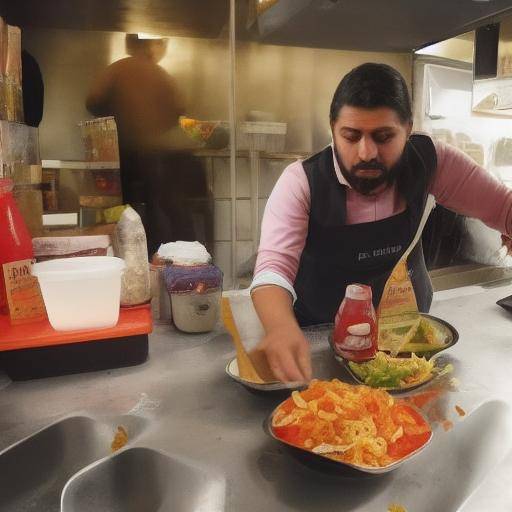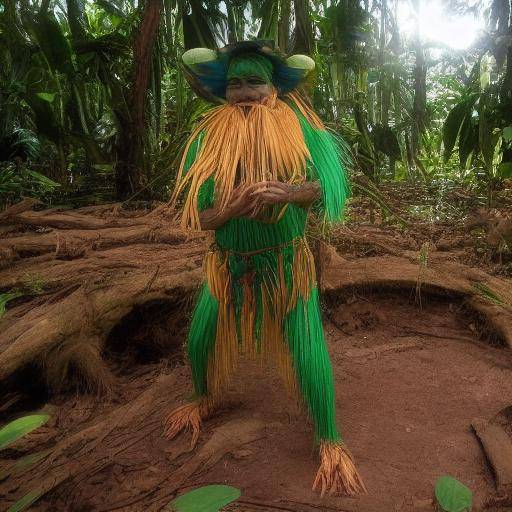
Introduction
Since time immemorial, legends and myths have sheltered societies, sowing fear and fascination among those who listen to them. In the vast and mysterious Peruvian landscape, a legendary creature known as the Pishtaco has challenged the passage of time, living in the stories of its inhabitants. This article will take you to explore the depths of this mythical figure, its interconnection with the folklore of Peru and the fear that infuses those who have heard their stories. Prepare to enter a world of traditions, beliefs and fears rooted in Peru's history.
The History and Background of the Pishtaco
The Pishtaco figure has its roots in the early history of Peru, becoming a central element of folklore and the oral tradition of the region. It is said that the Pishtaco is an evil being that lurks the lonely paths, manifesting itself as an apparently friendly individual but with sinister intentions. This demonic being is closely associated with the idea of stealing human fat, a concept that instills the deepest fear in those who cross with it.
In Andean mythologies, the Pishtaco figure has evolved over the centuries, adopting different forms and characteristics according to the communities that give him life. The Pishtaco account has been responsible for transmitting teachings, warnings and values over generations, becoming an inseparable part of the cultural identity of Peru.
Historical Significance
The Pishtaco has a historical relevance that dates back to the pre-Columbian era, where it was associated with rituals and beliefs typical of the civilizations that populated the Peruvian Andes. This enigmatic being has been the subject of anthropological studies and archaeological societies, who through research have tried to understand the influence of Pishtaco on the cultural practices of the region.
Milestones and Evolution
Over time, the Pishtaco narrative has experienced significant changes, adapting to the different historical and social contexts of Peru. From its ancient conception to its presence in the modern narrative, the Pishtaco has experienced an evolution that reflects the values and fears rooted in the Peruvian culture.
Anecdotes and Real Stories
Numerous anecdotes and stories intertwine with the myth of the Pishtaco, contributing to cement its place in the collective imagination of Peru. Reports of disturbing encounters with this being, transmitted from generation to generation, have deeply impacted the psyche of the Peruvian people, generating an ancestral fear of the Pishtaco.
In the next section, we will go further into the analysis of this enigmatic figure.
Detailed analysis of Pishtaco, Peru and Miedo
Current Benefits, Challenges and Trends
The myth of the Pishtaco, despite its terrifying nature, has demonstrated its power as a vehicle to convey important lessons and warnings to Peruvian society. However, this account has also created challenges around the preservation of cultural identity and the administration of fear in contemporary society.
Statistics and Examples
Specific data and examples allow us to understand the magnitude of the impact that the Pishtaco myth has had on the cosmovision of the inhabitants of Peru. Revealing statistics and significant events give us a clear view of the influence of this enigmatic being in Peruvian society.
Perspectives and Divergent Reviews
The myth of the Pishtaco has generated a range of interpretations and opinions, inciting debates about its role in popular culture and its relevance in modern society. Different experts and scholars have offered divergent perspectives that enrich the overall understanding of Pishtaco and its impact in Peru.
Comprehensive Review: The Pishtaco, Peru and the Fear
Applications, Case Studies and Best Practices
The myth of Pishtaco has permeated various areas of Peruvian life, from art to politics, and has been the subject of numerous studies and analysis. Cases of detailed study and best practices allow us to fully understand the relevance and impact of this figure in contemporary society.
Perspectives of Future Experts and Indicators
The opinions of experts and indicators of future trends project a specific vision on the continuing impact of the Pishtaco myth in Peru and the possible changes that it might experience in the future.
Comparative analysis
The Pishtaco, Peru and the Fear: Similarities, Differences and Synergies
Similarities, Differences and Synergies
A meticulous comparative analysis reveals both similarities and differences between the myth of Pishtaco, Peruvian society and fear as a universal concept. Exploring these connections is essential to understanding the complex interrelationship between these elements, and how they intertwine to influence the culture and psyche of Peruvian society.
Practical Tips and Accessible Tips
Practical Tips and Actions to Follow
Providing practical advice and concrete actions to our readers provides a unique opportunity to take advantage of the information presented in the article. In this way, readers can find useful guidance and resources to address the complexity of these issues.
Ideas and Industry Reviews
Reflections and Ideas Pioneras
Collecting and presenting expert reflections in the industry allows a deep insight into the influence and future of the Pishtaco myth in Peruvian society. Their pioneer ideas shed light on future events and trends that are expected in relation to this issue.
Case Studies and Applications in Real Life
Case Studies and Practical Applications
Case studies allow a detailed look at real scenarios where the Pishtaco myth has had a significant impact. Analyzing the results and lessons learned in these contexts offers a profound understanding of their ramifications in real life.
Future Trends and Predictions
Emerging Trends and Future Predictions
Exploring emerging trends related to the Pishtaco myth and fear allows a deeper understanding of the direction that these topics could take in the future. Current data-based predictions and expert opinions provide a valuable insight for those interested in understanding and anticipating the changes to come.
Conclusion and Frequently Asked Questions
Final conclusion
After a thorough analysis of the Pishtaco myth, its interrelation with Peruvian traditions and the notion of fear as a cultural phenomenon, it is clear that these themes possess a wealth and complexity that go beyond mere superstition. The impact of Pishtaco on the Peruvian cosmovision is undeniable, leaving an indelible mark on the collective psyche.
Frequently asked questions
- What is the origin of the Pishtaco myth and how has it evolved over the centuries?
- How has the Pishtaco myth influenced Peru's culture and traditions?
- Why does the Pishtaco account continue to generate so much fear in Peruvian society?
- Are there contemporary manifestations of the Pishtaco myth in the popular culture of Peru?
- How has the Pishtaco myth impacted on different industries, such as art, literature or cinema?
- What are some of the current interpretations of the Pishtaco myth by experts and scholars from Peru?
In short, the myth of Pishtaco is a fundamental element in the Peruvian folklore, woven with history, tradition and fear. His presence continues to inspire fascination and reflection to the same extent, projecting a mirror to the complex human nature and society in which it unfolds. As we enter into the understanding of these themes, we discover that their roots go beyond the superficial, encompassing profound aspects of cultural identity and ultimately human psyche.
This article has sought to shed light on the myth of Pishtaco and its influence in Peruvian society, offering a rich and multifaceted vision that invites reflection and the continuous study of these cultural and folkloric dynamics.




